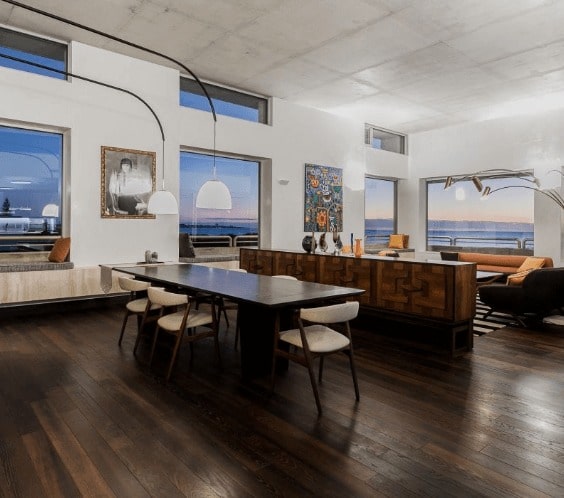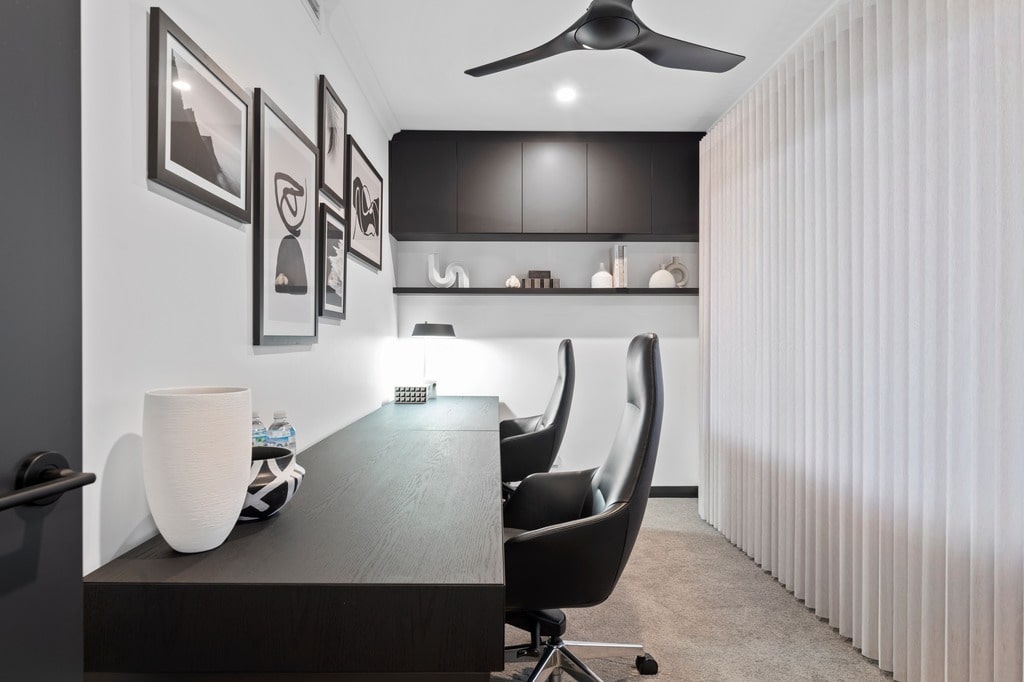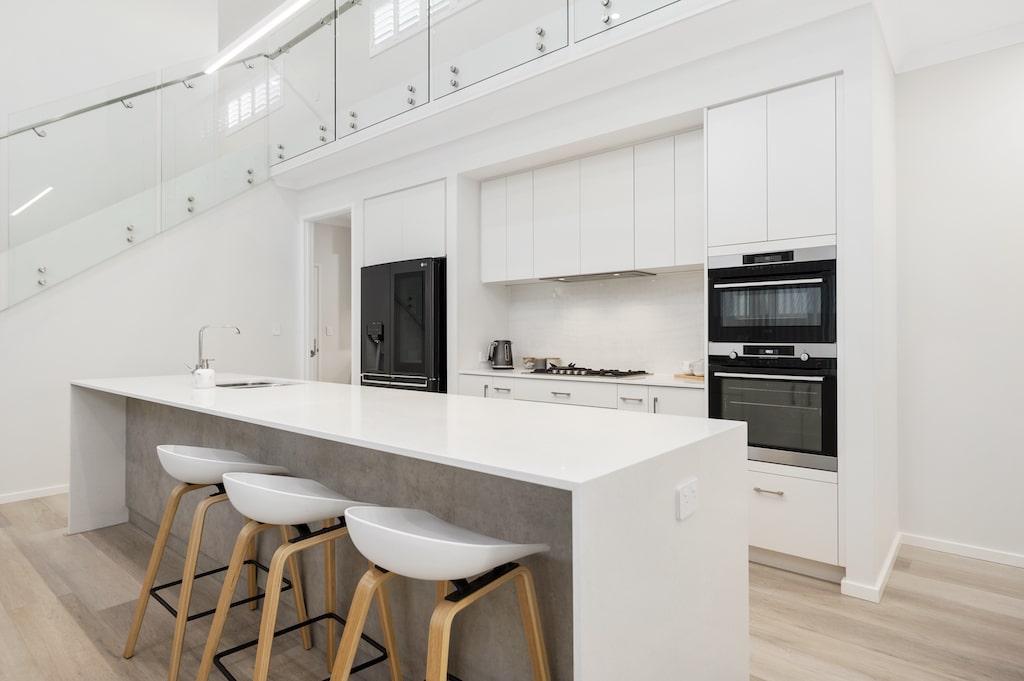
There’s a shift happening in home design, a move away from safe, same‑same minimalism toward spaces that feel textured, expressive, and unmistakably lived in. In Western Australia, where homes are shaped by big skies, bold light and coastal air, these changes feel especially relevant.
In 2025, it’s not about decorating by default. It’s about design with intent, detail that feels personal, materials that respect the climate, and layouts that reflect how we actually live. Here are ten interior design ideas that are setting the tone across WA right now.
Dopamine decor is giving greige a run for its money
Minimalism isn’t out, but it’s loosening its collar. In its place? Colour. Pattern. Personality. Think mustard sofas, sculptural lamps, and unexpected art in the powder room. The point isn’t perfection, it’s joy.
This wave of maximalism isn’t about clutter. It’s about creating interiors that lift your mood and reflect your story. It’s a bold counterpoint to years of beige restraint, and it’s showing up in WA homes with colour‑blocked cabinetry, playful wallpaper, and statement tiles that feel anything but safe.
We’re also seeing more clients lean into expressive design choices: magenta dining chairs, glossy emerald cabinetry, or tonal layering of pinks, ochres and terracotta. It’s not just about aesthetic confidence; it’s about making a home feel energising, personal and alive.
Not your nana’s wallpaper (Yes, wallpaper is back in)

After years in the too‑hard basket, wallpaper is officially back. And not in a delicate, polite way. We’re seeing bold botanicals in living rooms, vintage stripes in hallways, even moody murals in dining zones that set the tone for the whole home.
In homes designed to stand out, wallpaper is being used to create pockets of drama, without the permanence of architectural features. It’s a fast, tactile way to add interest, especially in otherwise pared‑back spaces.
It also adds dimension in ways paint can’t. Whether it’s a soft, textural grasscloth in a study or a high‑contrast geometric print behind open shelving, wallpaper turns transitional areas into visual moments.
Gingham’s having a grown-up moment
What was once country kitsch is being reimagined. Gingham is cropping up in upholstery, blinds, and bedding, often scaled large, rendered in rich tones, and paired with solid textures for balance.
It works because it’s familiar without being predictable. In WA homes, gingham adds warmth and softness to spaces with harder lines, especially when layered with stone, timber, or polished concrete.
Used in the right way, say, in a deep navy check on linen sheers or soft mustard cushions in a breakfast nook, gingham brings a nostalgic charm that still feels current. It’s versatile, grounding and surprisingly elegant when scaled to suit modern proportions.
Let the outside in (And let it stay)

Biophilic design is no longer niche; it’s the new standard. And in WA, with its long summers and breezy coastal climate, this return to nature makes sense.
We’re talking homes that open onto lush courtyards. Materials that age well in the elements. Layouts that maximise light, airflow and connection to green space. Even indoor trees are making a comeback, not as trends, but as core features.
This goes beyond aesthetics; it’s about wellbeing. Natural light improves mood. Cross‑ventilation reduces the need for artificial cooling. Connection to greenery boosts focus and lowers stress. Ceiling fans, louvre windows and generous eaves are simple, effective tools in an Australian context.
More than just a pretty frame
Forget matching frames and Pinterest symmetry. Today’s gallery walls are about curation over coordination. Vintage prints next to kids’ artwork. Travel photos beside typography. It’s less about filling a wall and more about reflecting a life.
In open‑plan WA homes, a gallery wall creates a natural focal point and offers a chance to change things up without redoing the whole room.
What makes this trend feel fresh again is the shift toward personal storytelling. Clients are mixing old family photos with modern abstracts, or combining sculptural wall hangings with framed textiles. The best gallery walls aren’t planned in one sitting; they evolve, layer by layer, just like the homes they live in.
Smart homes don’t need to shout
Technology now isn’t showy; it’s seamless. Think speakers concealed in walls or ceilings, lighting controlled via app, pop‑up power points (with USB/USB‑C) in benchtops, and TVs that disappear into joinery.
The goal is effortless living. WA homes are leading the charge here, integrating tech in ways that enhance daily life without cluttering it. It’s smart, sleek and entirely in the background, as it should be.
Voice control, temperature zoning for split systems, and automated blinds are increasingly common in custom builds. The beauty is in how discreet it all is; when done well, the tech fades away, leaving only the benefits behind.
Sustainability is starting to look seriously good

There’s a new wave of eco‑forward craftsmanship gaining traction. Reclaimed Australian hardwoods that look refined, not rustic. Low‑VOC, low‑tox paints in colours that actually feel luxurious. Handcrafted, small‑batch ceramics over mass‑market everything.
In a WA build, where the climate can be harsh and the expectations are high, these choices matter. And more clients are asking for homes that don’t just feel good—they do good.
Even beyond materials, we’re seeing a shift in thinking: passive solar orientation, thermal mass, water‑wise landscaping, and WELS‑rated tapware. Sustainability is no longer just a checkbox; it’s a lens applied across every stage of the design and build process.
Stained glass steps out of the past
Long seen as traditional or church‑like, stained glass is making a quietly stunning return—not in rainbows, but in subtle smoked tones, geometric designs, or abstract panels that play with light.
Used in entry doors, internal partitions or above staircases, stained glass is proving it can be both nostalgic and completely contemporary.
It’s also being used to filter light into darker spaces without losing privacy, like above a bathroom vanity or beside a stairwell. It adds artistry and texture in a way that’s hard to replicate with modern materials.
When less space does more

The home office isn’t going anywhere, but it’s evolving. Rather than entire rooms, we’re seeing compact study nooks tucked behind sliding doors, built‑in desks within living zones, or multi‑use nooks that flex from study to studio to craft station.
In custom builds, these partitioned spaces are tailored to suit real routines, without eating into entertaining or relaxation zones. It’s a thoughtful design that respects how families live today.
Add sliding partitions, storage‑integrated joinery or even acoustic plasterboard and panels, and these compact zones can shift seamlessly between work and rest, without ever feeling like dead space.
Texture on texture on texture
Smooth, flat interiors are being replaced by layered surfaces that invite touch. Tactile walls, bouclé sofas, stone benchtops with honed finishes, timber grain left exposed—it’s all part of a wider move toward richness over polish.
This trend isn’t about excess. It’s about depth. WA’s light can be harsh; texture softens it, absorbs it, and gives rooms a sense of warmth you can feel without needing to crank the colour.
Done well, this layering isn’t busy; it’s balanced. Think velvet drapes beside brushed steel fixtures, or soft wool rugs over raw concrete floors. It’s a sensory approach to space, and it makes even the most modern home feel more human.
Designing with feel, not just form
A home should feel like it belongs to its setting, its owners, and its purpose. The best ones aren’t built around trends, but around lives in motion. They evolve. They hold meaning. They offer comfort without sameness, and beauty without pretence.
That’s the approach we take at Makin Homes, designing from the inside out, crafting spaces that carry the imprint of the people who live there. If you’re planning a home that feels distinctly yours, not just in look but in how it lives, we’d love to help shape it with you.
Explore what’s possible with a custom design consultation, your ideas, our expertise, and one conversation to get it started.


